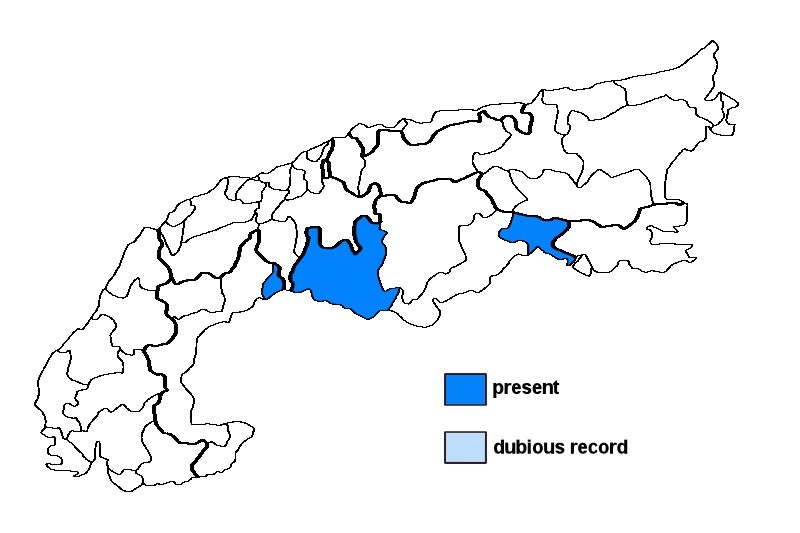Xanthomendoza fallax (Hepp) Søchting, Kärnefelt & S.Y. Kondr.
Syn.: Lecanora candelaria (L.) Ach. var. substellaris Ach., Physcia ulophylla (Wallr.) Lamy, Placodium fallax Hepp, Xanthoria fallax (Hepp) Arnold, Xanthoria substellaris (Ach.) Vain., Xanthoria ulophylla (Wallr.) Arnold
Lichenised.
Substrate: siliceous rocks, calciferous rocks, intermediate rocks (such as calciferous schists)
Altitudinal range: from the submediterranean/colline belt (potential vegetation: mixed deciduous forests dominated by Quercus and Carpinus) to the subalpine belt (potential vegetation: open, taiga-like forests dominated by Larix decidua and/or Pinus cembra and Rhododendron)
Note: this mainly northern to montane species mainly grows on siliceous or calcareous rocks. Most records of X. fallax from the Alps are from bark, and refer to the mainly epiphytic X. huculica (see note on that species). There is an open nomenclatural problem with this species, as the purported basionym, Physcia fallax Hepp ex Arnold, is a later homonym of Physcia fallax (Weber) DC. (1805).
Italy: Friuli; Lombardia;





